Roy's Note: Tom and Mary Murnan joined us on this year's Fortification Tour, after I had met him a couple of years ago at a Barbeito Madeira event in Northern California. Tom subsequently penned an article for FTLOP on that specific event, focusing on the food and wine pairings as much as the wine itself. Tom mentioned he would be writing an article for another periodical that featured one specific visit from our recent tour. I appreciate Tom submitting this article for reprint here in the newsletter.
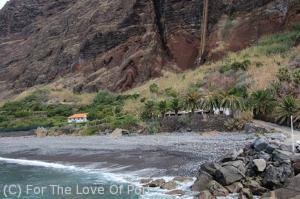
The Fajã dos Padres seen from the sea. Note funicular lift up the side of the cliff and restaurant on the right
This article was first published by the Board of Governors of the Americas of the International Wine & Food Society in its journal, Wine Food & Friends, Issue 103, Fall 2012.
One of the most famous vineyards in the world has slipped into obscurity, but recent events have given hope that it may be coming back. It is located on the southern side of the island of Madeira and was well known by the 18th century. It was renowned for the quality of its Malvasia, or Malmsey wine, the scarcest and sweetest of the various Madeira styles.
It is rare in Madeira to have a vineyard-designated wine. Typically, small plots of land are laboriously hewn out of the steep mountainsides here. Grapes come from hundreds of farmers, who take their crop to the Lodges for crushing. The biggest vineyard currently belongs to H&H, and it is only 10 hectares, small by any standard. One named vineyard in Madeira is the Fajã dos Padres. Its history is fascinating.
When Madeira was discovered in 1419 by João Gonçalves Zarco and his two other captains, the Portuguese crown granted them the land under the Sesmaria system whereby they had to settle and develop the land, and in return, they became the landowners. The island was divided, and Zarco's portion included the Fajã. Fajã is Portuguese for a piece of land that has fallen off a cliff and formed a base at the bottom. Just to the west of Cabo Girão, the fifth highest cliff in Europe, and on the south side of the island not far from the capitol Funchal, it is the only vineyard in Madeira that is mere feet higher than the Atlantic Ocean. It was early on recognized as a good microclimate for growing grapes, especially Malvasia, which thrives in warmer areas. The spectacular 900 foot sheer wall behind it reflects the sun back onto the grapes. Malvasia is a finicky grape that requires a lot of sunlight and a sheltered position at 150 to 200 meters above sea level. The Fajã provides just this perfect microclimate. In addition, the soil is volcanic and fertile.
There are only two ways to reach this isolated area: by boat or to come down from the top in a kind of funicular that holds eight persons. This is not for the claustrophobic! The total Fajã area is small, about 9 hectares. This unique microclimate particularly suits Malvasia, which does best at lower altitudes. You can't get much lower than just a few meters above sea level.
The Malvasia Cândida was introduced to Madeira from Crete around 1450. Prince Henry the Navigator is said to have wanted a sweet wine that could compete with wine from Venice, and Malvasia was just the grape. The descendants of Zarco owned the plot until it was donated to the Jesuits, who arrived in 1595 to found schools and do parish work. They had a small colony on the Fajã, a series of buildings, and a chapel. They planted Malvasia, Sercial and Terrantez. The Jesuits made their Malvasia famous due to its quality, and were accused of cornering the Malvasia market. Having visited Madeira as a Chaplain in the Royal Navy, Sir John Ovington, in his A Voyage to Suratt in the Year 1689, wrote that the Jesuits had a monopoly:
The Product of the Vine is equally divided between the Proprietor and him that gathers and presses the Grapes; and yet for the most part the Merchant is Thriving and Rich, whilst the Grape-gatherer, imploy'd by him is but poor. Among the Merchants, the Jesuits are none of the meanest, who every where contend for precedence in Fortune, as well as in place; and have here secured the Monopoly of Malmsey, of which there is but one good Vineyard in the whole Island, which is entirely in their possession.
It is highly unlikely that the Jesuits cornered the market, but Ovington mentioned that the best Malvasia was coming from the Fajã, which was under Jesuit control. More likely, the production was so limited that the price went up.
In the mid-18th century, the effort to eliminate the Jesuits came to a head. The order was hated by certain ruling houses in Europe (notably Portugal, Spain, and France) for their independence, their loyalty to the pope, and for papal privileges granted them. In 1759, The Marquês de Pombal, the defacto head of government in Portugal, struck first, despite the support of Pope Clement XIII. All Jesuit properties were confiscated and auctioned off in Portugal and Madeira. By 1769, the Society of Jesus was suppressed throughout Europe by the newly elected Clement XIV, who succumbed to pressure from the crowns of the afore mentioned countries. The order survived in Protestant countries, like England, and in Russia, who received the protection of Catherine the Great. Even though the Jesuits no longer owned the property, the Fajã's name stuck, and even to this day the Fajã of the Priests is remembered.
Thereafter, there was a series of owners, and the double viticultural disasters of Oïdium in the 1850's and Phylloxera in the 1870's. The government nationalized the land but asked a high price. Fewer grapes were grown, and the crop switched to bananas and fruit trees. Author Alex Liddel in his book Madeira writes that the Fajã was finally purchased in 1919 by Joaquim Carlos de Mendonça, the paternal grandfather of the wife of the present owner, Mario Eugénio Jardim Fernandez. At the time, there were Malvasia and Terrantez vines. By the mid 1940's, there was only one Malvasia Cândida vine left on the Fajã. The owner at the time had cuttings made and planted. But by the late 1970's, those replanted Malvasia vines were mostly gone, again except for one vine. Again, cuttings were made and the Malvasia was replanted using the traditional training method. Modern production of Malvasia is about 1500 to 3000 liters. Currently, this spit of land is undergoing a renovation. There is a nice restaurant and facilities for swimmers. The Internet is full of advertisements for vacationing in the cottages.
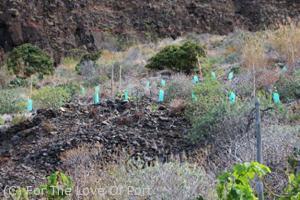
Mario planted the new Terrantez vines in the upper vineyard. It is flourishing in the rock, with scant soil.
I was part of a wine tour organized by the on-line newsletter For The Love Of Port. Proprietor Roy Hersh arranged for our group to visit Fajã dos Padres and talk with Mario Fernandez on the 9th of June of 2012. Roy has been to the Fajã several times, and Mario told him that he was the first American to visit when he initially made the trek to this historic vineyard. Although Mario had replanted Malvasia, Roy noticed on a visit in 2006 that there were still six Terrantez vines remaining from previous times. At the time, Roy was lobbying all the producers he visited to plant Terrantez. He tried to get Mario to plant more Terrantez vines.
Barbeito, the famous Madeira Lodge, was celebrating their 50th anniversary. They arranged to buy a barrel of the Fajã's 1950 vintage and bottled what remained. Only 36 bottles were sent to the Rare Wine Company for the United States. Roy wanted Mario to experience this rarity, so he brought a bottle of the 1950 on his next trip in 2007. Mario, his wife and daughter, and a very small group were present at the uncorking. Mario was overwhelmed by the quality and breeding of this, by Madeiran standards, fairly young wine. Mario told Roy he would think about planting Terrantez, and between 2010 and 2011 he planted 500 Terrantez vines.
Our group tasted barrel samples from the small Canteiro (gentle aging room) that included the 2001, 1996, 1993 Malvasia, the 2011 Malvasia Cândida, and finally, the 2011 Terrantez. Unless you are a Madeira aficionado, most people don't realize that vintage barrel samples on the island, common in most of the world's wine districts, are quite rare. Due to IBVAM regulations (Instituto do Vinho, do Bordado e do Artesanato da Madeira, the institute that controls Madeira wine production), barrel samples are not allowed in Madeira for vintage wine because the casks have been sealed shut. Sealing wax and ribbons around the bung prevent sampling until the wine is ready for bottling. Unless the wine is not meant for sale or export, barrel samples are not permitted. Production at this time is so small at the Fajã that the wine is used for family, friends or, in our case, a specially arranged visit.
Here are a few tasting notes from our cask samples. Unfortunately, I only made sketchy tasting notes during our short visit. In Madeira terms, where wine is just getting good at 100 years old, these were all way too young, but what a learning moment to taste Madeira in such an early state that typically only winemakers get to experience: from the cask. In general, these were all promising, wonderful wines.
2011 Terrantez Oxidized apple nose and apple flavors on the palate. Very refreshing. A slight bitterness on the finish. Wonderful.
2001 Malvasia Golden amber color. Extremely young, giving the impression that it is definitely not ready to drink. Slightly out of balance, perhaps in an awkward phase. Surprisingly, not very sweet.
1996 Malvasia Light amber color. Surprising what another five years aging in cask makes. Approachable now, and taking on the complex flavors of the wood. Much better impression than the 2001, and sweeter as well.
1993 Malvasia Wonderful! Medium amber color. Nuts and toffee on the palate. Sweet. Great balance of acidity and fruit. Gaining complexity from the wood. Great promise.
2011 Malvasia Cândida. Lighter in weight than the Terrantez. Some noticeable tannins. Moderate sweetness.
All the wines had great potential.
Until 1984, when the funicular was added, access by the sea was the only way to reach the Fajã. Today, the Fajã is a garden that features bananas, pineapples, avocados, mango, papaya, Surinam cherry and passion fruit besides grapes. There are nine cottages that are advertised on the Internet that consist of a fully equipped kitchenette, satellite TV and private bathroom. A number of cottages were being remodeled when we were there.
After our tour, we dined alfresco in the shade overlooking the Atlantic Ocean. The restaurant provided us with Bolo de Caco, a traditional garlic bread made from sweet potatoes, Tuna cooked rare topped with onions in olive oil, and baked potato. I often wondered what a fresh, ripe banana would taste like, one that hadn't been picked green six weeks earlier and ripened with gas. Well, I had one at the restaurant, grown at the Fajã. It was the sweetest banana I have ever had, but the texture was firmer than those overripe bananas going black that we get at home. It was wonderful!
So, all indications point to a revitalization of a historic and important vineyard. Kudos to Mario Fernandez for the re-plantings and renovations, and to Roy Hersh who reconnected Mario to the Fajã's glorious past and bright future. Perhaps one day there will be commercially viable quantities of wine that will be placed on the international market.
Copyright © Thomas Murnan, 2012, All rights reserved.

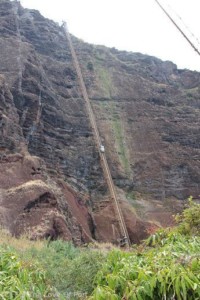
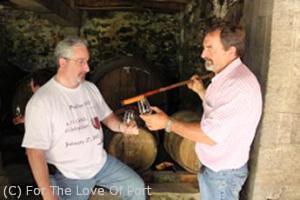
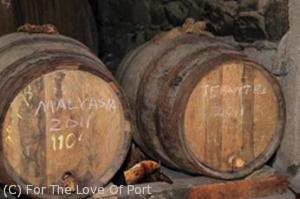
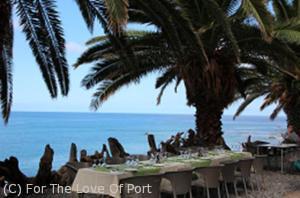
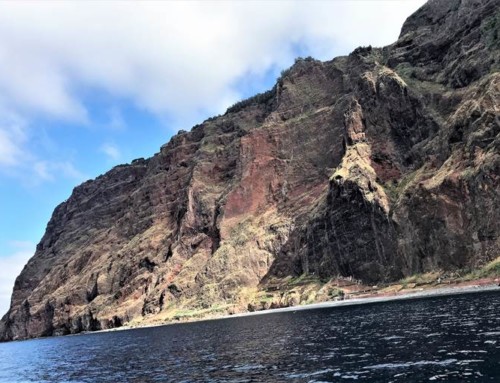
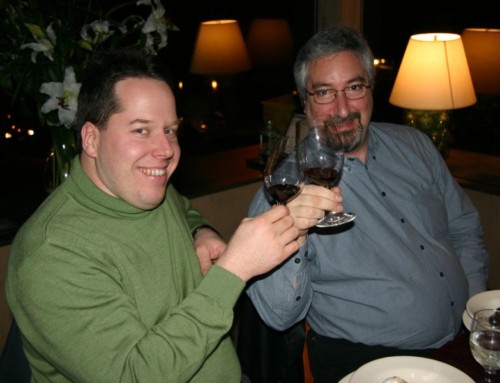
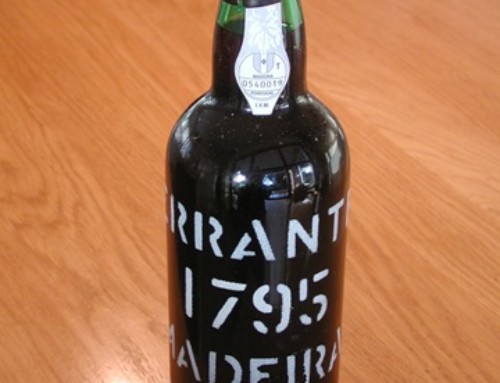
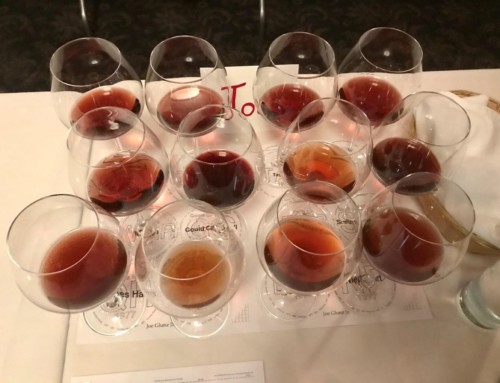
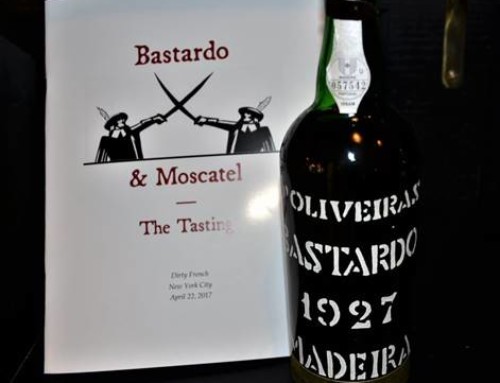
Leave A Comment
You must be logged in to post a comment.